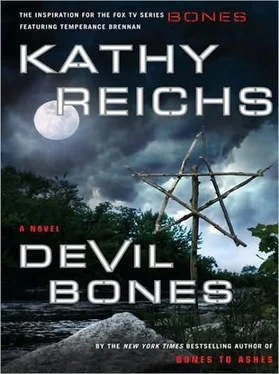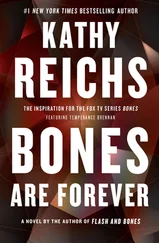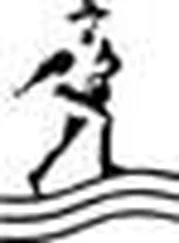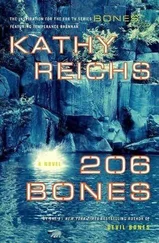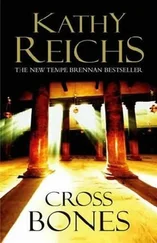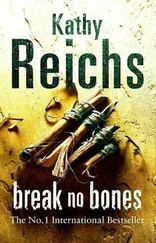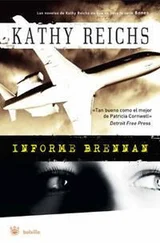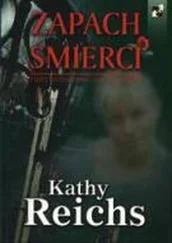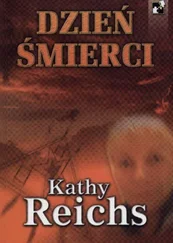When faced with these situations, I’m not always kind in my remarks. Over the years, my message has gotten across.
That, plus the fact that I teach body recovery workshops for the ME in Chapel Hill, and for the Charlotte-Mecklenburg PD.
“Cop said the place stinks,” Larabee added.
That didn’t sound good.
I grabbed a pen. “Where?”
“Greenleaf Avenue, over in First Ward. House is being renovated. Plumber knocked through a wall, found some sort of underground chamber. Hang on.”
Paper rustled, then Larabee read the address. I wrote it down.
“Apparently this plumber was totally freaked.”
“I can head over there now.”
“That would be good.”
“See you in thirty.”
I heard a hitch in Larabee’s breathing.
“Problem?” I asked.
“I’ve got a kid open on the table.”
“What happened?”
“Five-year-old came home from kindergarten, ate a doughnut, complained of a bellyache, hit the floor. She was pronounced dead two hours later at CMC. Story to tear your heart out. An only child, no prior medicals, completely asymptomatic until the incident.”
“Jesus. What killed her?”
“Cardiac rhabdomyoma.”
“Which is?”
“Big honking tumor in the interventricular septum. Pretty rare at her age. These kids usually die in infancy.”
Poor Larabee was facing more than one heartbreaking conversation.
“Finish your autopsy,” I said. “I’ll handle the chamber of horrors.”
Charlotte began with a river and a road.
The river came first. Not the Mississippi or Orinoco, but a sturdy enough stream, its shores rich with deer, bear, bison, and turkey. Great flocks of pigeons flew overhead.
Those living among the wild pea vines on the river’s eastern bank called their waterway Eswa Taroa, “the great river.” They, in turn, were called the Catawba, “people of the river.”
The principal Catawba village, Nawvasa, was situated at the headwater of Sugar Creek, Soogaw, or Sugau, meaning “group of huts,” a development not based solely on proximity to the water. Nawvasa also snugged up to a busy route of aboriginal commerce, the Great Trading Path. Goods and foodstuffs flowed along this path from the Great Lakes to the Carolinas, then on down to the Savannah River.
Nawvasa drew its lifeblood from both the river and the road.
The arrival of strange men on great ships ended all that.
For helping in his restoration to power, England’s King Charles II awarded eight men the land south of Virginia and westward to the “South Seas.” Charlie’s new “lord proprietors” promptly sent people to map and explore their holdings.
Over the next century, settlers came in wagons, on horseback, and wearing out shoe leather. Germans, French Huguenots, Swiss, Irish, and Scots. Slowly, inexorably, the river and the road passed from Catawban to European hands.
Log homes and farms replaced native bark houses. Taverns, inns, and shops sprang up. Churches. A courthouse. At an intersection with a lesser trail, a new village straddled the Great Trading Path.
In 1761, George III married Duchess Sophia Charlotte of Mecklenburg-Strelitz, Germany. His seventeen-year-old bride must have caught the imagination of those living between the river and the road. Or perhaps the populace wished to curry favor with the mad British king. Whatever the motive, they named their little village Charlotte Town, their county Mecklenburg.
But distance and politics doomed the friendship to failure. The American colonies were growing angry and ripe for revolt. Mecklenburg County was no exception.
In May 1775, peeved at his majesty’s refusal to grant a charter for their beloved Queens College, and incensed that redcoats had fired on Americans in Lexington, Massachusetts, Charlotte Town’s leaders assembled. Dispensing with diplomacy and tactful phrasing, they drafted the Mecklenburg Declaration of Independence in which they declared themselves “a free and independent people.”
Yessiree. The folks who wrote the Mec Dec didn’t mess around. A year before the Continental Congress put pen to paper, they told old George to take a hike.
You know the rest of the story. Revolution. Emancipation and civil war. Reconstruction and Jim Crow. Industrialization, meaning textiles and railroads in North Carolina. World wars and depression. Segregation and civil rights. Rust Belt decline, Sun Belt renaissance.
By 1970, the Charlotte metro population had grown to roughly 400,000. By 2005, that number had doubled. Why? Something new was traveling the path. Money. And places to stash it. While many states had laws limiting the number of branches a bank could have, the North Carolina legislature said “be fruitful and multiply.”
And multiply they did. The many branches led to many deposits, and the many deposits led to very much fruit. Long story short, the Queen City is home to two banking-industry heavies, Bank of America and Wachovia. As Charlotte’s citizenry never tires of chortling, their burg ranks second only to New York City as a U.S. financial center.
Trade and Tryon streets now overlie the old trading path and its intersecting trail. Dominating this crossroads is the Bank of America Corporate Center, a fitting totem in sleek glass, stone, and steel.
From Trade and Tryon, old Charlotte’s core spreads outward as a block of quadrants called, uncreatively, First, Second, Third, and Fourth Wards. Blinded by a vision of their town as a child of the New South, Charlotteans have historically cared little about preserving these inner-city zones. The single, and relatively recent, exception has been numero quatro.
The northwestern quadrant, Fourth Ward, was built by the town’s nineteenth-century elite, then slipped into genteel decay. In the midseventies, spurred by the steel-magnolia force of the Junior League ladies, and some friendly financing by the banks, Fourth Ward became the focus of intense restoration effort. Today, its grand old homes share narrow streets with old-timey pubs and quaint modern townhouses. Gas lamps. Brick pavers. Park in the middle. You get the picture.
Back in the day, Second Ward was the flip side of lily-white Fourth. Lying southeast of the city center, Log Town, later known as Brooklyn, occupied much of the ward’s acreage. Home to black preachers, doctors, dentists, and teachers, the Brooklyn neighborhood is now largely extinct, cleared for the construction of Marshall Park, the Education Center, a government plaza, and a freeway connector to I-77.
First and Third Wards lie to the northeast and southwest, respectively. Once crowded with depots, factories, rail yards, and mills, these quartiers are now crammed with apartments, townhouses, and condos. Courtside. Quarterside. The Renwick. Oak Park. Despite the city’s policy of raze and replace, here and there a few old residential pockets remain. Larabee’s directions were sending me to one in Third Ward.
Exiting I-77 onto Morehead, my gaze took in the monoliths forming the city skyline. One Wachovia Center. The Westin Hotel. The seventy-four-thousand-seat Panthers stadium. What, I wondered, would the residents of Nawvasa think of the metropolis superimposed on their village?
I made a left at the bottom of the ramp, another onto Cedar, and rolled past a cluster of recently converted warehouses. A truncated rail line. The Light Factory photo studios and gallery. A homeless shelter.
On my right stretched the Panthers training complex, practice fields muted green in the predusk light. Turning left onto Greenleaf, I entered a tunnel of willow oaks. Straight ahead lay an expanse of openness I knew to be Frazier Park.
A bimodal assortment of homes lined both sides of the street. Many had been purchased by yuppies desiring proximity to uptown, modernized, painted colors like Queen Anne Lilac or Smythe Tavern Blue. Others remained with their original African-American owners, some looking weathered and worn among their gentrified neighbors, the deed holders awaiting the next tax reevaluation with trepidation.
Читать дальше
